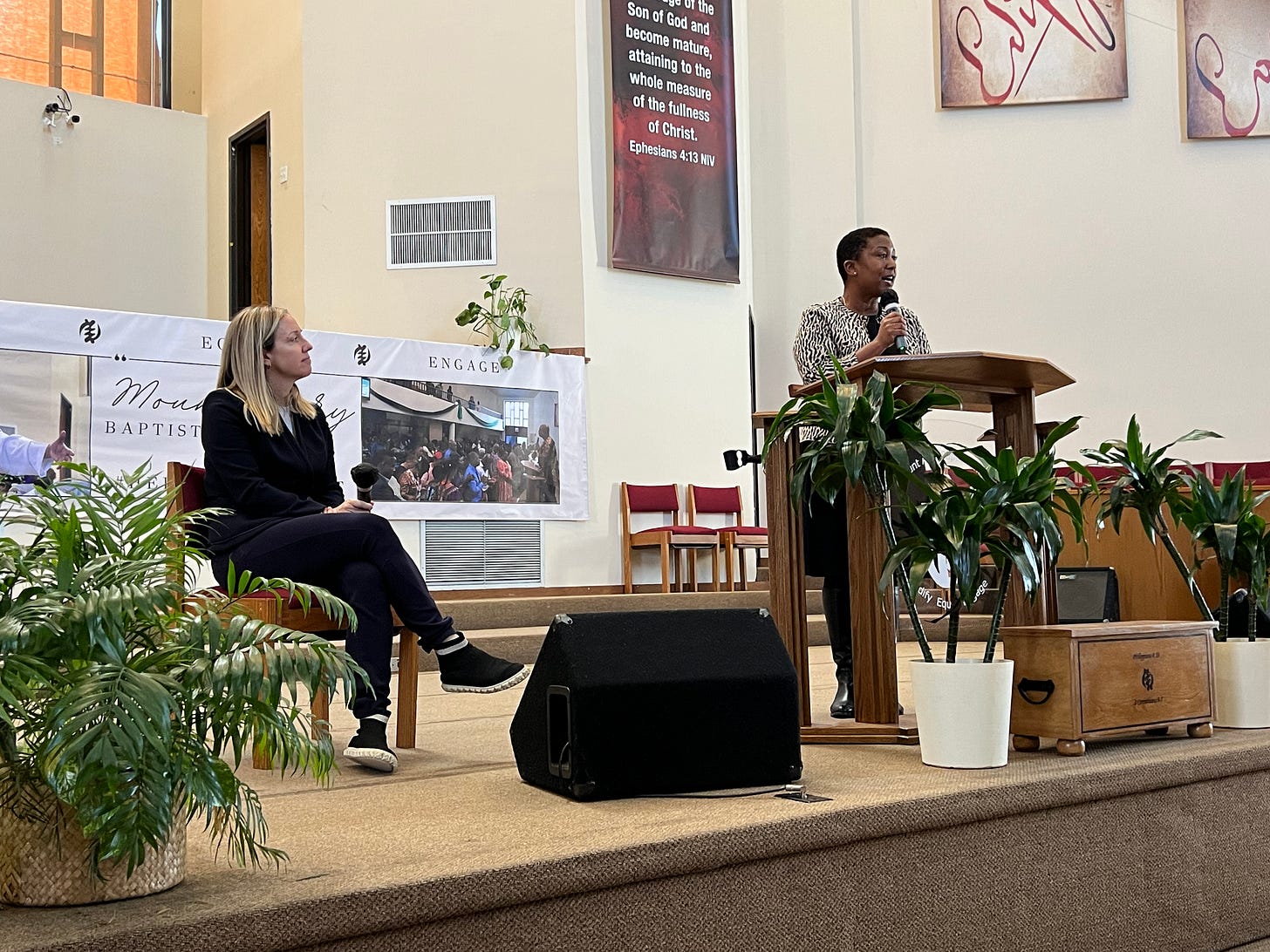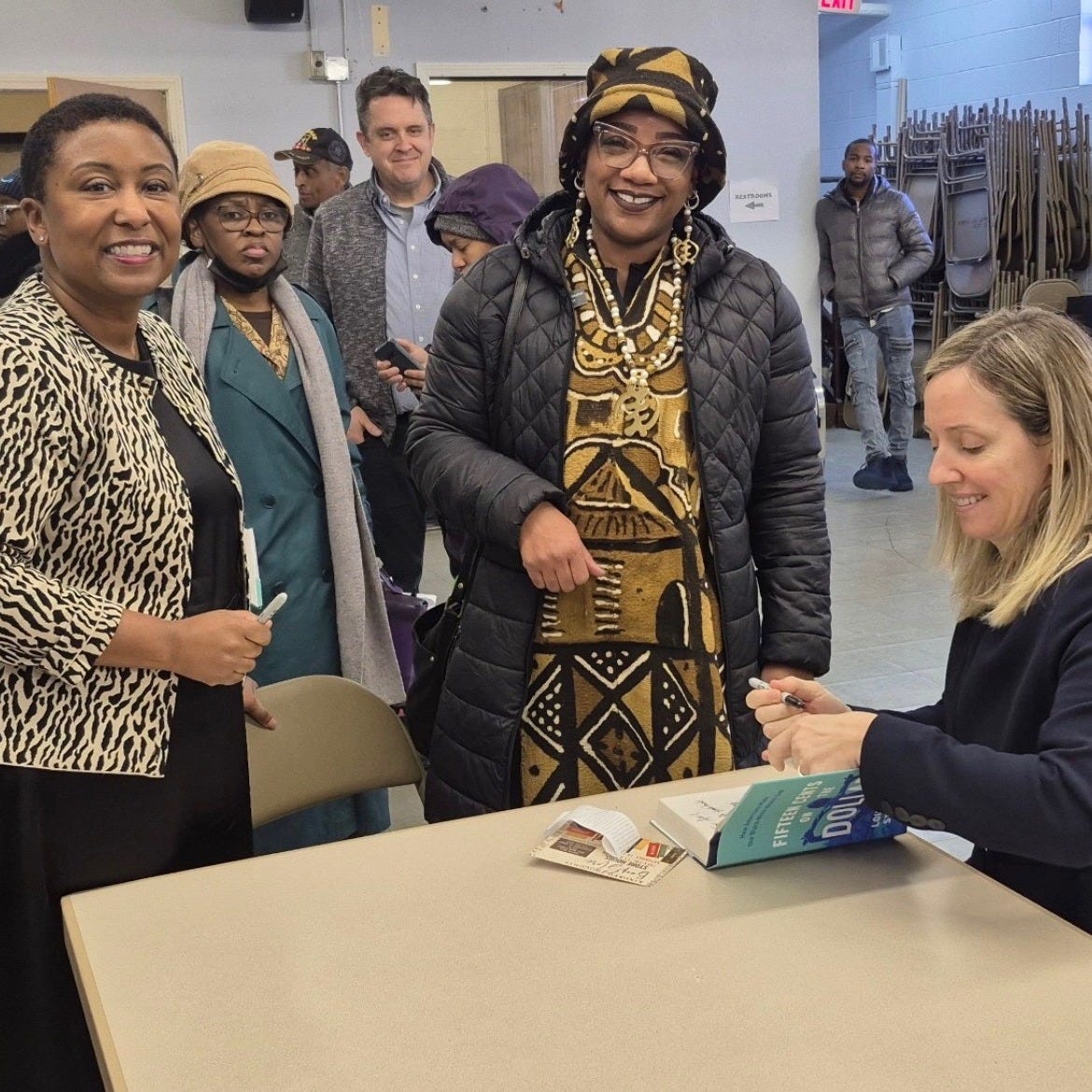We’ve heard about a “failed system” and “decline” from multiple corners on this day that included both the inauguration and Dr. Martin Luther King Jr. Day.
For our part, we honored Dr. King today by speaking about Black wealth building to a packed congregation at the Mount Aery Baptist Church in Bridgeport, Conn. Below we bring you a few of Dr. King’s statements about wealth building, as well as some updates about our book — “Fifteen Cents on the Dollar” — and our travels to spread this important information.

Dr. King and Capitalism:
Building Black wealth was important to Dr. Martin Luther King Jr., who famously said, “America has given the Negro people a bad check, a check which has come back marked ‘insufficient funds.’”
That quote is the opening epigraph of our book, which explores the full history of Black wealth building in our country and presents a nuanced take on why the Black-white wealth gap remains so large today: the gap is stuck at 15 cents on the dollar. In other words, the typical Black family holds 15 cents in wealth for every $1 held by a typical white family.
Chapter Ten of our book covers some of the complex history around Black banking — banks set up and owned by Black Americans, managed by Black Americans or aimed at Black Americans as customers. One famous effort at Black banking that succeeded, and later failed, was a bank created with baseball legend Jackie Robinson. That bank, called Freedom National Bank, was based in Harlem and it generated national attention and national hope in the 1960s as Dr. King and the Civil Rights movement gained greater traction. When Dr. King won the Nobel Peace Prize, he deposited his prize money in the Freedom Bank.
Even as Jackie Robinson was trying to figure out a community banking model that was financially stable (not always an easy thing to do), Dr. King was growing more concerned about the very model of capitalism. Leading demonstrations for jobs and on behalf of union workers and poor Americans, King was ahead of his time in calling for programs that are more en vogue today, such as a guaranteed minimum income.
But can racial wealth gaps as gaping as the Black-white gap be solved within capitalism? Dr. King grew dubious toward the end of his life. As singer-activist Harry Belafonte recounted in his book, the last time he saw Dr. King, King told him, “we live in a failed system. Capitalism does not permit an even flow of economic resources. With this system, a small privileged few are rich beyond conscience and almost all others are doomed to be poor at some level.”
If this piques your interest, we hope you’ll read Chapter Ten of our book… and in fact, we hope you’ll read it all and tell us what you think.
We thank Dr. King and the many, many Civil Rights leaders and participants whose work has been important in shining a light on the facts around racial wealth gaps.
Updates on our Book:
We are excited to be meeting with several classes this semester to answer questions about our book. If you teach a topic related to Black history, financial history, or wealth inequality, and if you’ve added our book to your syllabus, please reply to this e-mail. We would be glad to Zoom with your class.
It’s our number one goal to make “15 cents on the dollar” a nationally recognized statistic. We continue to dedicate time to visit with communities. You can see where we’ve been and where we are heading here. We welcome your suggestions on other communities (in person or virtual) that would like to meet with us to learn more.
We are grateful that The New Yorker selected our book as one of the “Best Books of 2024” and that Oprah, too, selected our book as one of her top picks. In Oprah’s list, our book ranked as the 3rd most "thought-provoking" book published in 2024, alongside "James" by Percival Everett and "Bel Canto" by Ann Patchett. Our book will “change your perspective and inspire conversations," according to Oprah.
Our travels have helped us listen and learn from many communities, as well as enabled us to share racial wealth gap data. As The Texas Tribune wrote, “Fifteen Cents on the Dollar: How Americans Made the Black-White Wealth Gap [is] a book that has brought racial wealth gap data to higher public consciousness.” Greater public consciousness is our goal, and we will keep on keeping on…
We were pleased to see “fifteen cents on the dollar” make it at the start of 2025 into the printed pages of The New York Times.
Thank you for reading. If you have yet to purchase our book, we would like to recommend a Black-owned bookstore in Bridgeport today, Kindred Thoughts. They are selling our book here.
-Louise and Ebony






Great post!! Congratulations on making such important reader's lists!
And it’s failing even worse today in 2025 for so many Americans as the gap between haves and have nots continues to widen.